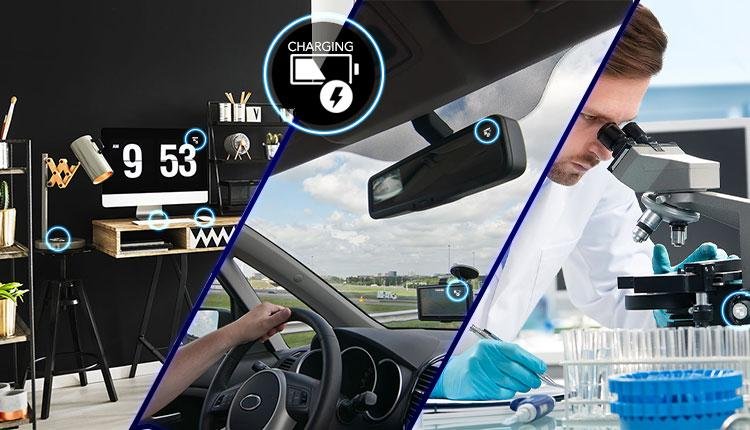Wireless Power Transmission: Revolutionizing the Way We Power Devices
The way we transmit electrical power has come a long way since the invention of telegraph cables and overhead power lines. In recent years, there has been a significant shift towards wireless power transmission, a technology that allows the transfer of electrical energy without the need for physical connections or wires. This revolutionary technology is transforming the way we power our devices, offering convenience, efficiency, and environmental benefits.
The Rise of Wireless Power Transmission
The global wireless power transmission market has experienced tremendous growth in recent years, and this trend is expected to continue in the coming decade. According to Allied Market Research, the market size was valued at $5.7 billion in 2020 and is projected to reach $35.2 billion by 2030, with a compound annual growth rate of more than 21%. North America is leading the way in this market, driven by technological advancements and the increasing demand for wireless charging solutions.
Wireless power transmission can be categorized into two main technologies: near-field and far-field. Near-field technologies utilize inductive coupling to transfer power over short distances, typically a few centimeters. This technology is commonly used in charging devices such as smartphones, electric shavers, and implantable medical devices like cardiac pacemakers and cochlear implants. On the other hand, far-field technologies utilize electromagnetic waves to transfer power over longer distances. This technology is still in its early stages but holds great potential for applications such as solar power satellites and wireless charging for electric vehicles.
Advantages of Wireless Power Transmission
Wireless power transmission offers several advantages over traditional wired power transmission methods. One of the key benefits is convenience. With wireless charging, there is no need for physical connections or cables, making it easier to charge devices without the hassle of plugging and unplugging cords. This is particularly beneficial for consumer electronics such as smartphones, tablets, and laptops, where the demand for wireless charging is rapidly increasing.
Another advantage of wireless power transmission is improved energy efficiency. Traditional wired power transmission systems suffer from energy losses due to resistance in the wires, whereas wireless power transmission can achieve higher efficiency levels. This not only reduces energy waste but also contributes to a more sustainable and environmentally friendly power infrastructure.
Wireless power transmission also enables greater mobility and flexibility. With wireless charging, devices can be charged while in use or on the move, eliminating the need to be tethered to a power outlet. This is especially important in industries such as healthcare, where wireless power transmission can power implantable medical devices and enable greater freedom for patients.
Applications of Wireless Power Transmission
The applications of wireless power transmission are diverse and expanding rapidly. In the consumer electronics industry, wireless charging is becoming increasingly prevalent. Smartphones, smartwatches, and wireless earbuds are now commonly equipped with wireless charging capabilities, allowing users to charge their devices by simply placing them on a charging pad or dock.
The automotive industry is another sector where wireless power transmission is gaining traction. Electric vehicles (EVs) are becoming more popular, and wireless charging offers a convenient and efficient way to replenish their batteries. Wireless charging pads embedded in parking lots or garages can automatically charge EVs without the need for physical connectors, making charging more accessible and user-friendly.
Wireless power transmission also has significant potential in the healthcare industry. Implantable medical devices, such as pacemakers and neurostimulators, can benefit from wireless power transmission as it eliminates the need for invasive procedures to replace or recharge batteries. This technology enables continuous and uninterrupted power supply to these devices, improving patient comfort and reducing the risk of complications.
Challenges and Future Outlook
While wireless power transmission offers many advantages, there are still challenges to overcome. One of the main challenges is the efficiency of power transfer over longer distances. Far-field technologies are still in the early stages of development and require further advancements to achieve higher efficiency levels. Additionally, the cost of implementing wireless power transmission infrastructure and devices can be a barrier for widespread adoption.
However, ongoing research and technological advancements are addressing these challenges. Innovations in wireless power transmission technologies, such as resonance coupling and beamforming, are improving the efficiency and range of power transfer. The integration of wireless charging into infrastructure, such as public spaces and vehicles, is also expanding the reach of wireless power transmission.
Looking ahead, the future of wireless power transmission is promising. As the demand for wireless charging solutions continues to grow, advancements in technology and economies of scale are expected to drive down costs and increase accessibility. This will further accelerate the adoption of wireless power transmission across various industries and pave the way for a wire-free future.
Wireless power transmission is revolutionizing the way we power our devices. With its convenience, efficiency, and environmental benefits, this technology is gaining momentum and becoming increasingly prevalent in our daily lives. From charging our smartphones wirelessly to powering implantable medical devices, wireless power transmission is transforming industries and improving the overall user experience. As research and development continue to push the boundaries of wireless power transmission, we can expect to see even greater advancements and innovations in the years to come. Peter Jonathan Wilcheck Wireless Power Transfer and EV Charging Subject Matter Expert
Post Disclaimer
The information provided in our posts or blogs are for educational and informative purposes only. We do not guarantee the accuracy, completeness or suitability of the information. We do not provide financial or investment advice. Readers should always seek professional advice before making any financial or investment decisions based on the information provided in our content. We will not be held responsible for any losses, damages or consequences that may arise from relying on the information provided in our content.
- 19 views
- 0 Comment



Recent Comments